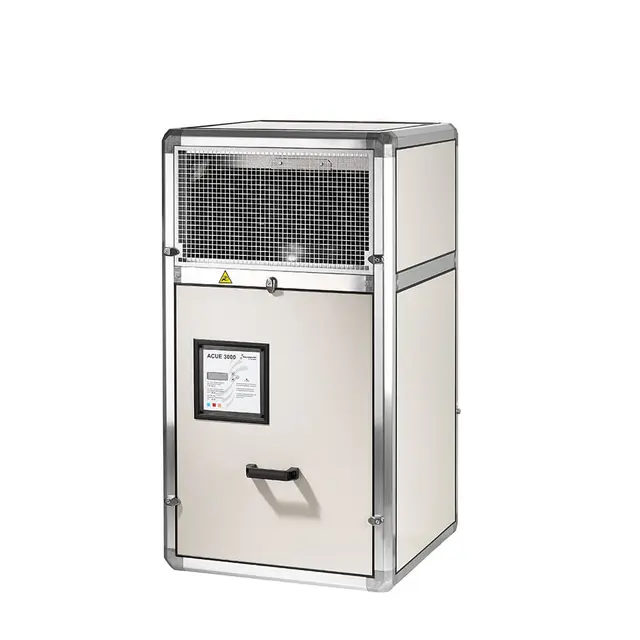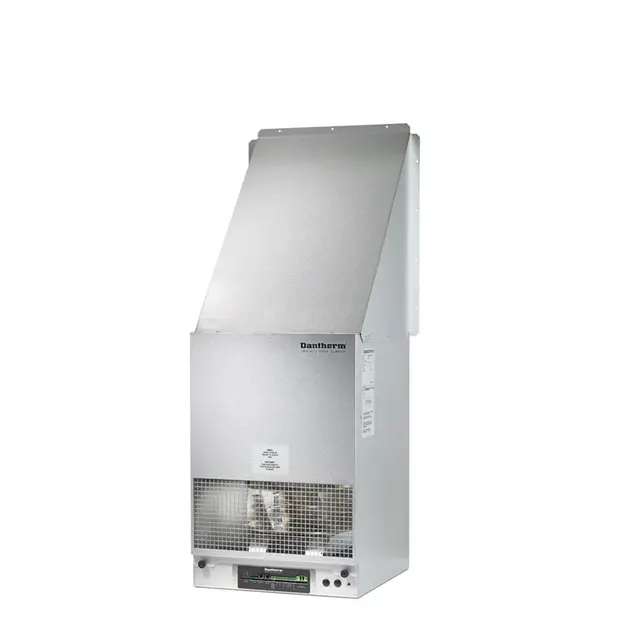Achieving high-capacity free cooling in the extreme cold
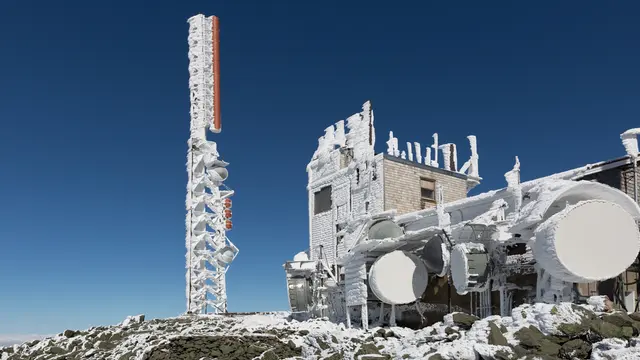
- Home
- Insights
- Cooling insights
- Achieving high-capacity free cooling in the extreme cold
For free cooling systems to work effectively, it is important that the ambient temperature is colder than the temperature required inside a data centre or telecom shelter. But, what if temperatures become too cold? Learn how Dantherm overcame this problem to ensure free cooling is achievable even during the harshest winters.
Excessive heat is one of the most prevailing problems that data centres and telecoms contend with. When temperatures are not kept in check, the chances of this sensitive equipment overheating and malfunctioning skyrocket, consequently incurring a lot of costs in the form of repairs, replacements and downtime.
Cooling solutions are therefore critically important in these settings, and few systems offer the energy efficiency, ease of use and cost-effectiveness of free cooling technology. Yet for this approach to be feasible, the ambient temperature outside of the centre or shelter must be lower than the typical 24ºC room temperature that these environments need to maintain.
Fortunately, most of Europe exhibits outdoor temperatures lower than this for the majority of the year. Norway for example is a prime example of a country where the air temperature is significantly lower than this most of the time. However, places like Norway also have to deal with the opposite end of the spectrum - extreme cold.
Here, we will discuss how Dantherm’s high-capacity free cooling systems enabled Norwegian telecom operators to keep their cooling solutions operational in the chilliest conditions, reducing the risk of temperature-based breakdowns.
What is free cooling?
In case you are unfamiliar, free cooling systems are an alternative to conventional air-conditioning units. Instead of using compressors and refrigerant gases to lower the temperature in a room, a free cooling system harnesses the cooler ambient temperature outside of the data centre or telecom shelter to keep the equipment inside cool.
As a result, this represents a more energy-efficient, cost-conscious way to deliver cool, fresh air into a room, enabling telecommunication companies to sharply reduce the operating costs of their technical shelters.
If you would like to learn more about the advantages of free cooling, check out our article “Free cooling: The best solution for telecom shelters?”
The problem of extreme cold
As mentioned earlier, for free cooling solutions to function effectively, the ambient temperature outside of the centre or shelter must be lower than the optimal 24ºC. In places like Norway this usually won’t be a problem outside of maybe a few days a year.
However, in Norway and other Eastern European or Scandinavian countries, the bigger issue is the extreme cold that can occur during winter. Average temperature is -6.8ºC, but conditions can get much worse than that - the record low for Norway was -51.2ºC in Karasjok, Finmark in 1999.
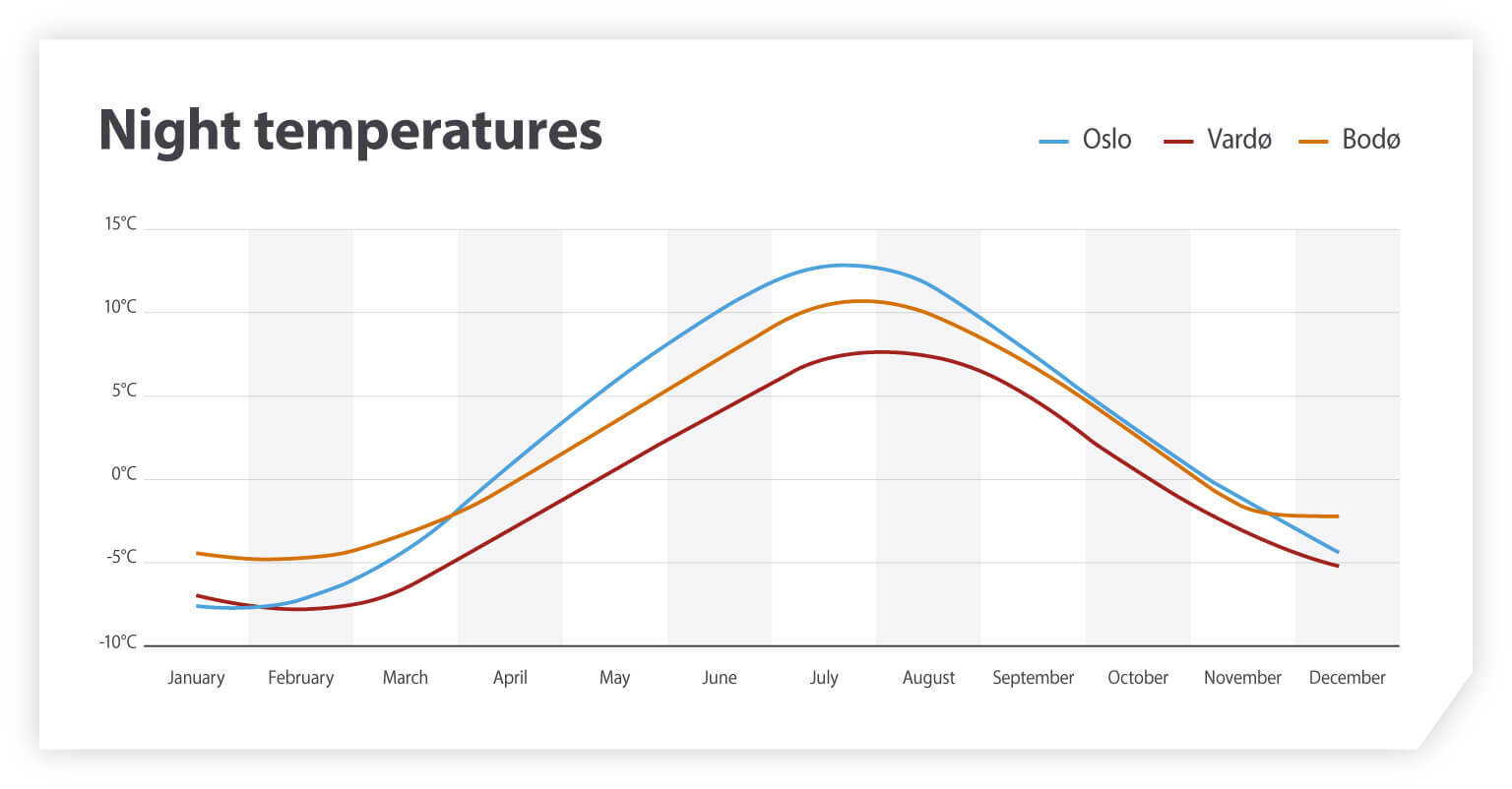
In these conditions, the risk of a free cooling system or alternative air-conditioning unit breaking down is raised significantly, as components may freeze or become overwhelmed by the coldness of the air. The winter season also creates serious challenges with severe snow, frost and limited access to data centres and telecom shelters.
This was a problem faced by several of our customers in Norway - a problem that our high-capacity free cooling systems were more than capable of solving…
TKS 60: A custom-built solution for the coldest conditions
A number of Norwegian telecom operators were seeking an energy-efficient, reliable way to remove heat from their BTS sites. Free cooling was the natural choice - but the system needed to contend with the harsh winters in the area.
In order to meet these specific demands, our team at Dantherm developed a customised free cooling solution that could function perfectly in these challenging environments: the Dantherm TKS 60.
The TKS 60 delivers high-capacity free air cooling to control the internal environment of telecom shelters using a minimum of energy. This cost-saving potential was ideally suited for the Norwegian operators, as long it could overcome the challenges posed by the coldest winter nights.
Here is how the TSK 60 fulfils those obligations:

In order to manage the threat of ice, snow and frost posed in the coldest conditions, the TKS 60 is enclosed in an extra-rugged, insulated cabinet. This ensures that it is capable of handling high heat loads while at the same time withstanding the extreme environment, while also offering flexible mounting methods.
Furthermore, the outdoor unit air intake is designed with a specialised ‘snow hood’, again to prevent snow or frost from impacting the inner workings of the system.

Heavy snow also has the potential to obstruct the air inlet of a free cooling solution, preventing the ambient air from outdoors entering to cool the data centre or shelter. The indoor version of the TKS 60 overcomes this as it is designed with an air inlet through the bottom of the unit.
The entire shelter is elevated, creating space under the floor and ensuring obstruction-free air intake from beneath. Plus, as heavy snowfall usually only covers a shelter in part, there will almost always be an open-air path left somewhere under the construction, which this air inlet utilises.

In order to counteract the risk of system shutdown in extremely low temperatures, Dantherm added a motorised damper to an already installed heater on a previous model, and connected both to the intelligent Dantherm controller.
This means that, if the ambient temperature is deemed too low to be added by the shelter, the Dantherm controller protects the TKS 60’s transmission equipment and maintains set temperature by closing the damper and activating the heater.

As a DC-based passive cooling solution, the TKS 60 maintains stable operation on battery backup. Moreover, the unit is applicable for Dantherm remote climate control and is built to last for a minimum of 10 years.
Overall, this means that the system overcomes the problem of limited access during winter by requiring minimal maintenance and service visits year-round, making it robust and reliable enough to sustain its performance during the coldest times of the year.
Harnessing the power of free cooling in all conditions
After developing this custom solution to meet the challenges posed by extremely cold environments, the Dantherm TKS 60 is now installed at over 2000 sites across Norway, and many more units in place across Europe. As well as the above, the unit also offers customers:
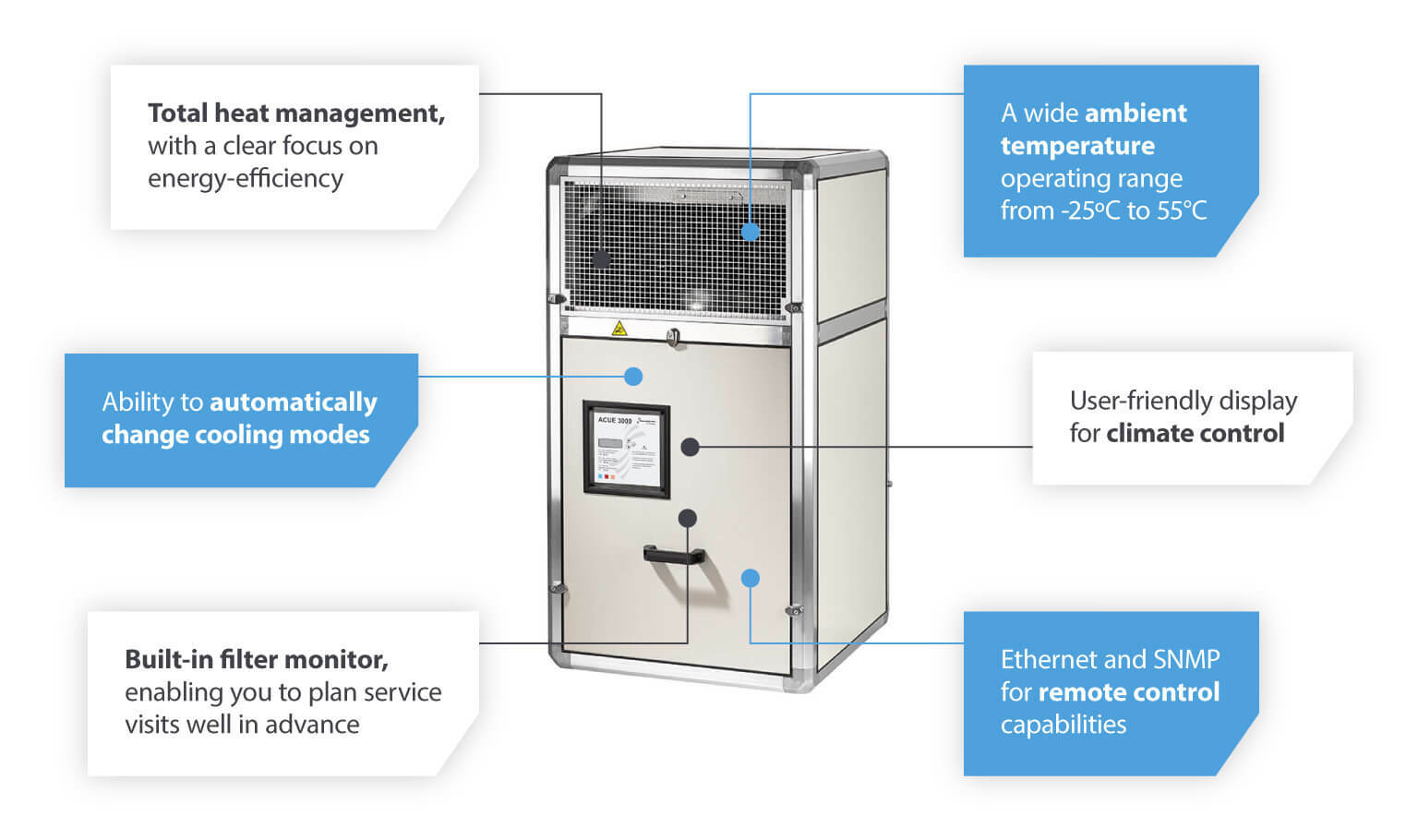
The TKS 60 is just one example of how our team at Dantherm seeks solutions for the problems our customers are facing. Extreme cold and harsh winters are challenges that many countries have to contend with at points during the year, but that should not compromise the performance of their cooling systems - systems that need to function at all times to protect the essential equipment contained inside the shelters or data centres.
We actively embed ourselves into our customers’ industries to understand their concerns, and we are constantly refining and evolving our solutions to meet these head-on.
Learn more about Dantherm’s highly efficient electronic cooling systems today by completing the form below, or get in touch with our team directly for more information.
Related products
Featured insights

Why free cooling keeps electronic devices cool for less than traditional air conditioning systems

A quick comparison between the two technologies
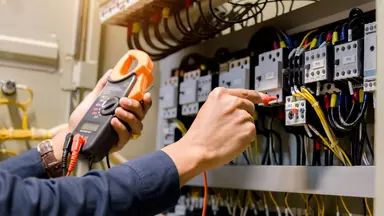
Monoblock and split air-conditioning solutions for telecoms
Need help with choosing the right solution? Our team of over 100 climate control experts can assist.
You can also reach out or join the discussion on our Social Media. Check out our LinkedIn page.
